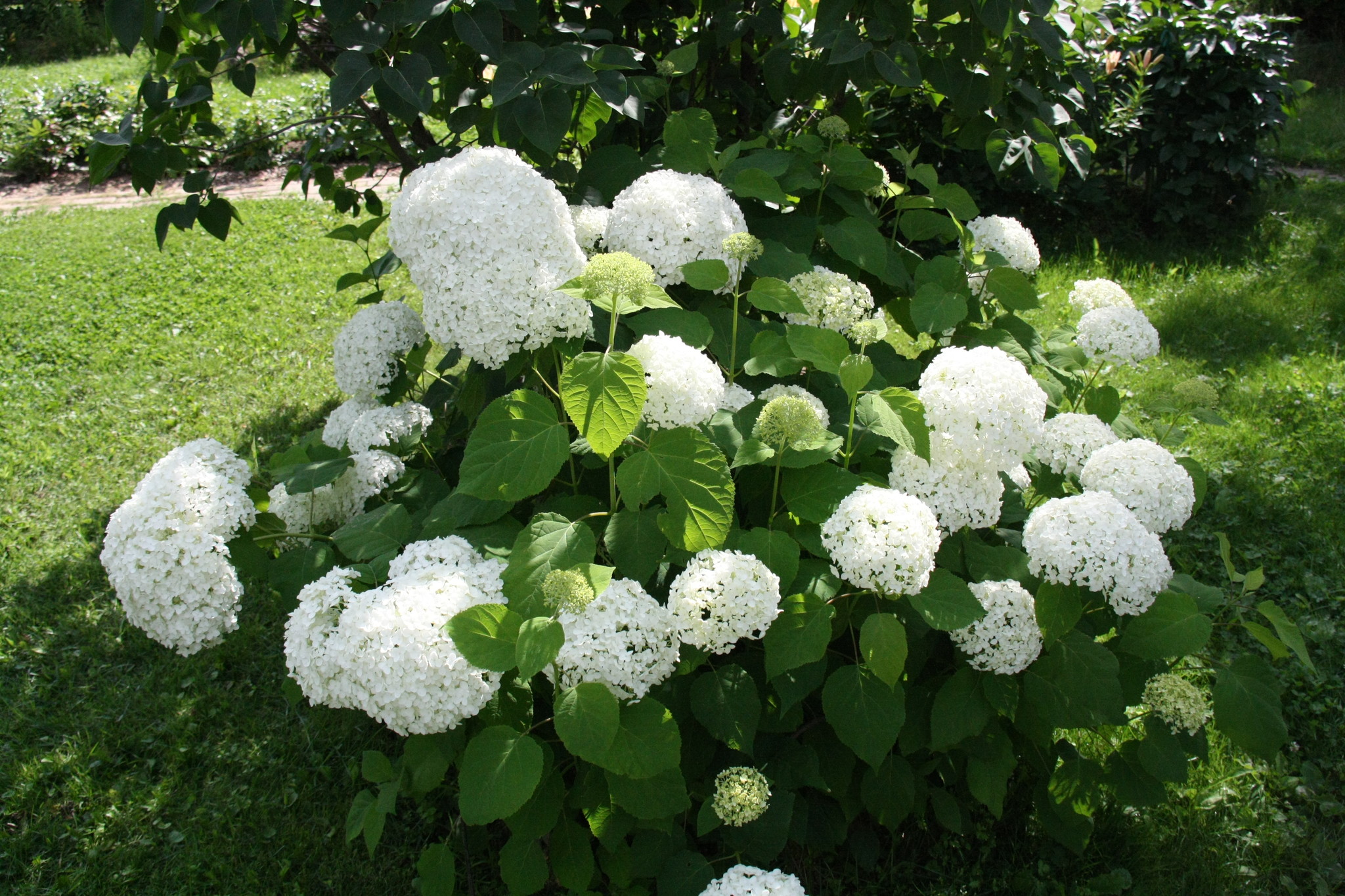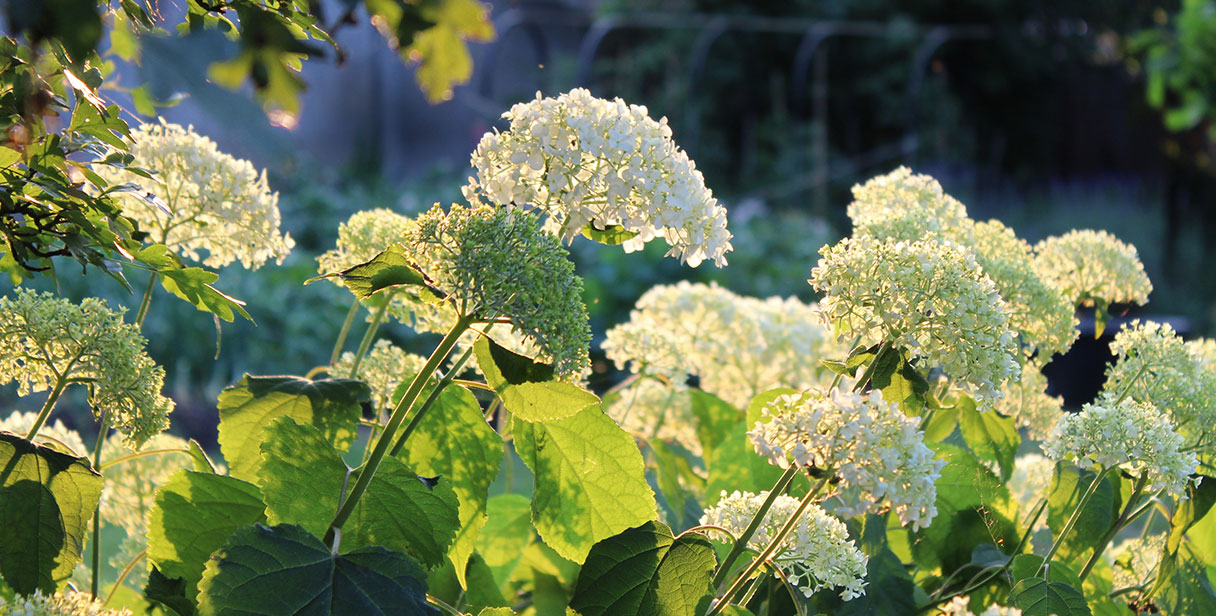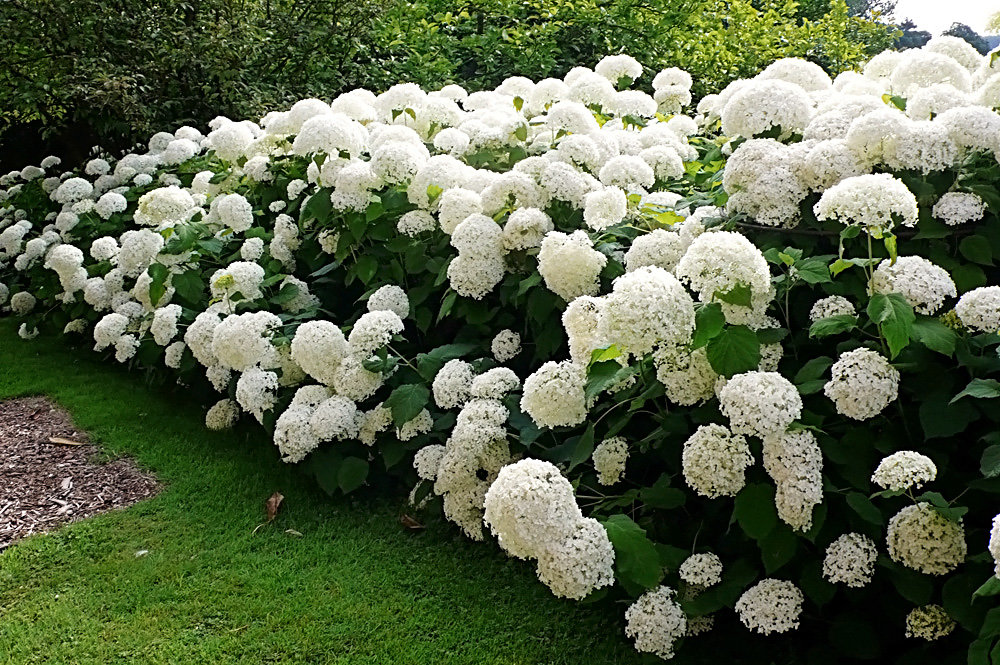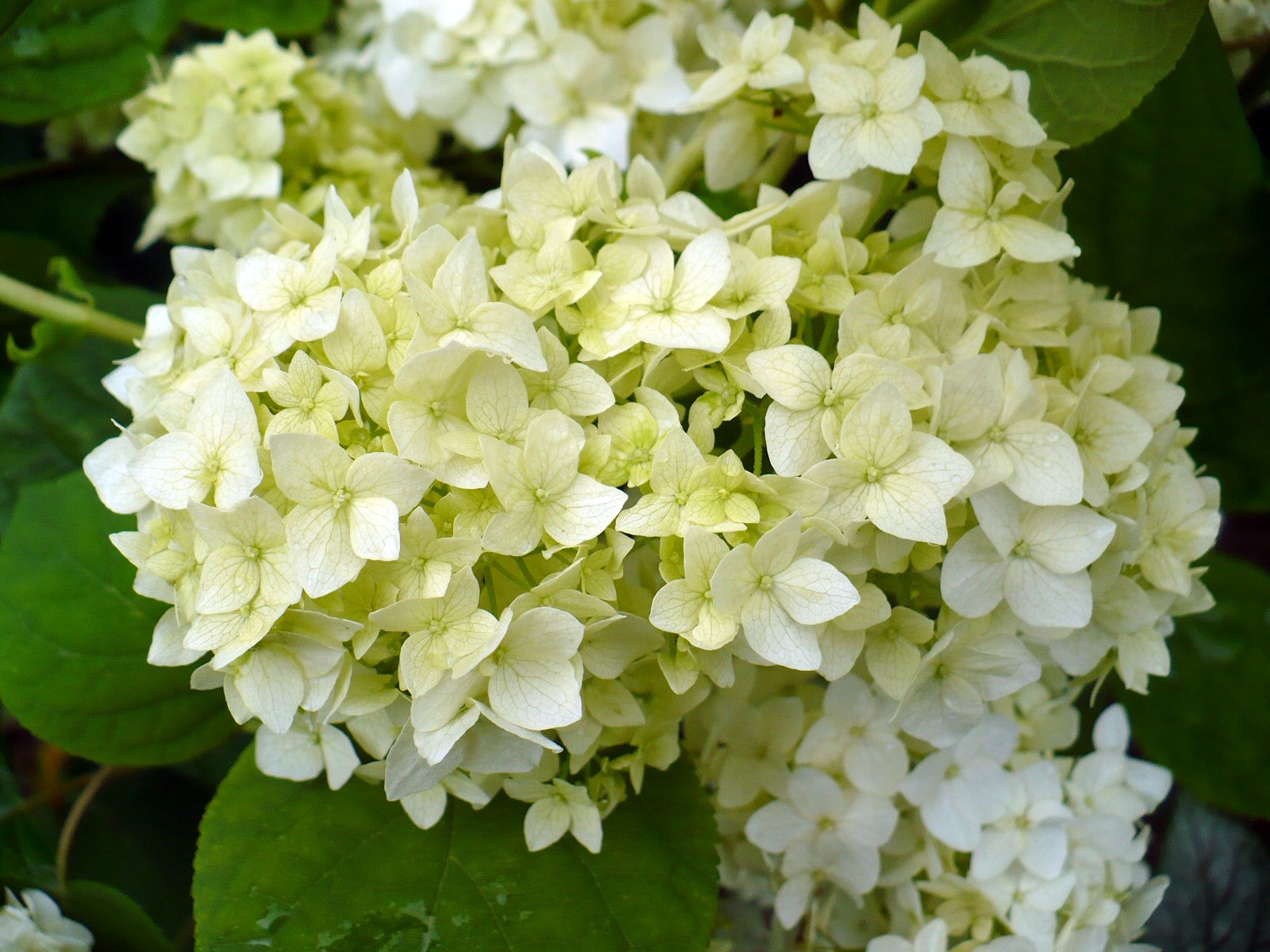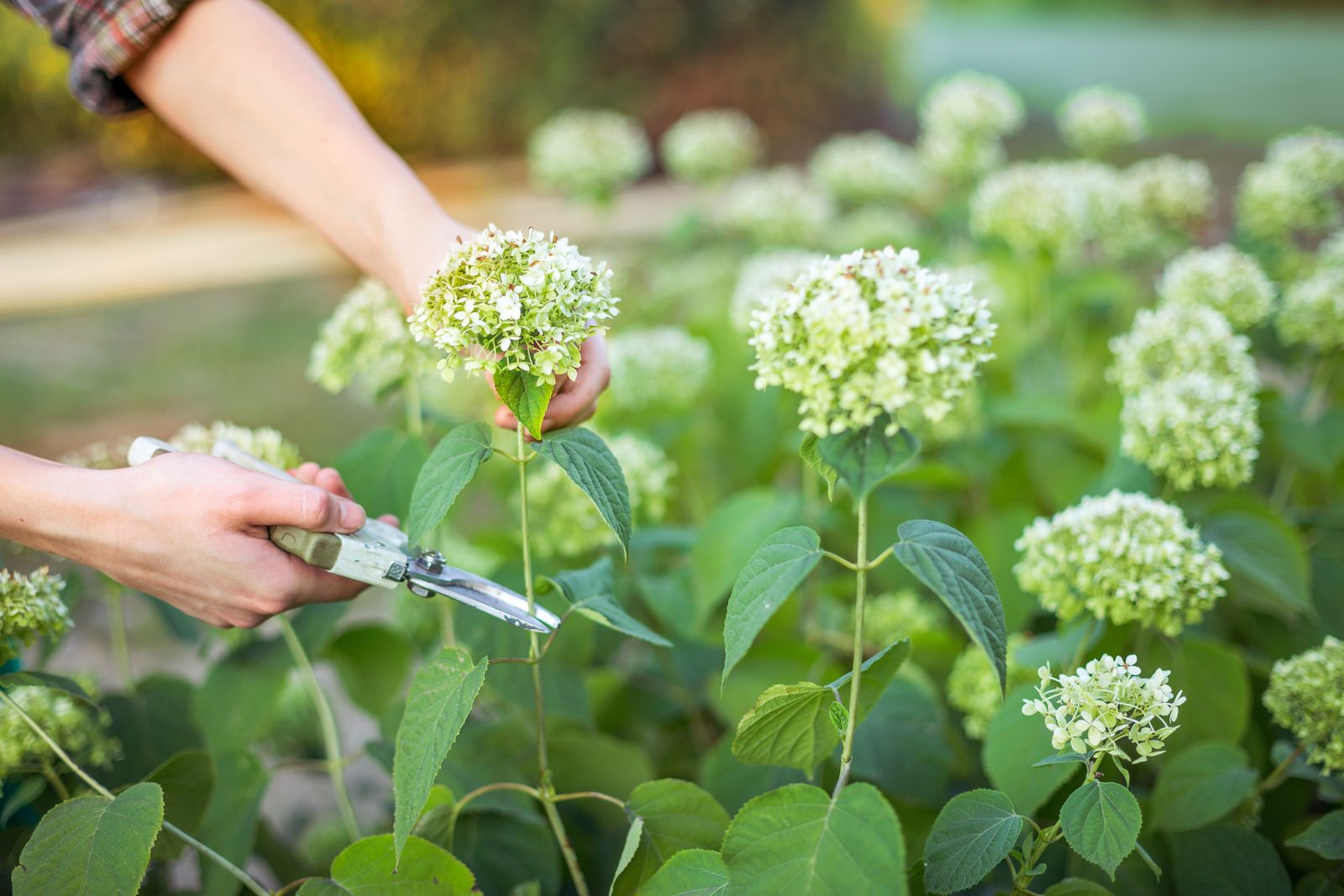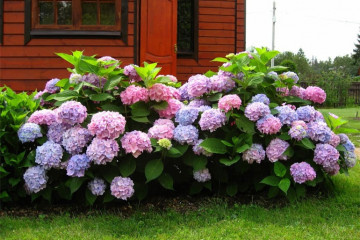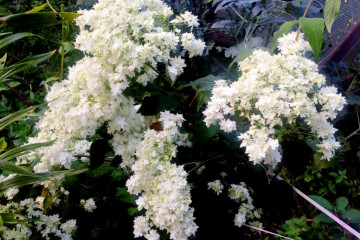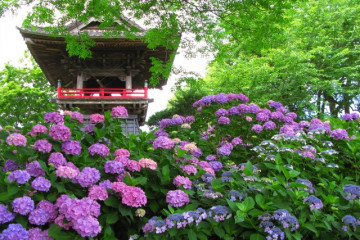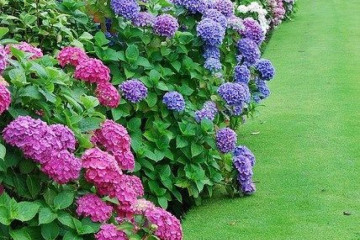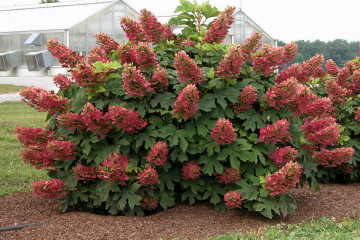Hydrangea tree - planting and care in the open field
Content:
A moisture-loving and luxuriantly blooming ornamental perennial shrub - tree hydrangea - appeared in Russia from North America, where it grows in the wild. Breeders have obtained many varieties and hybrids, differing in color of flowers and crown sizes.
Hydrangea tree: planting and care in the open field
Wild shrubs (Latin name "Hydrangea Arborescens") in their natural habitat can grow up to 3 m, but cultivated varieties are much more modest in size.
The crown lends itself well to formative pruning, after which it will look neater. Therefore, these bushes are frequent guests of garden compositions with the participation of various cultures: flowers, conifers, etc. If you wish, you can form a tree or a lush bush, in both cases it is not difficult to get an excellent result.
The origin and appearance of the plant
The North American pioneers provided the basis for the work of breeders around the world. The modern cultivated tree hydrangea is a bush of not very thick pubescent shoots, covered with ovoid leaves, bright green on the front side and bluish green on the inside.
Flower descriptions
The inflorescences have a diameter of about 15 cm and the shape of a convex shield. They are collected from small whitish flowers, each of which is no more than 2 cm wide. The usual flowering season lasts from the second half of July to the end of September. Seeds ripen in October.
Types and varieties
The cultivated tree hydrangea does not have as many varieties as other types of ornamental shrubs. The color of the inflorescences is predominantly white or pink. But the hybrid novelties also have more interesting unusual colors. You can guess about them by how the seedling will be called. All of them feel great in most climatic zones of Russia, including the Moscow region, the Urals and Siberia.
White
This group is the most numerous. It includes the following well-known and popular varieties:
- Annabelle is a white treelike hydrangea, its creamy flowers form spherical inflorescences up to 20 cm in diameter. The height of a drought-resistant bush is about 1.5 m. Large numerous inflorescences force the branches to lean to the ground, so it is advisable to provide them with support. The life of the bush is up to 50 years. Frost resistance - up to −40 ° С;
- Incrediboll differs from Annabelle in even larger inflorescences, up to 30 cm in diameter. In this case, the flowers initially bloom in a greenish hue, and then turn into snow-white hats. The plant is taller - it reaches 3 meters in height;
- Hayes Starburst is also a hardy shrub with strong branches. Its inflorescences with double flowers are dome-shaped and at first have a greenish color, gradually becoming white. The height of the bush is about 1.2 m.
Pink
This color is not typical for tree hydrangea, but breeders in every possible way strive to diversify the natural shades of inflorescences. The result of their labor was the following varieties:
- Invincibelle is a tree-like shrub with inflorescences of a bright dark pink color, almost red. Most of all, a blooming hydrangea bush resembles a lilac, since the size and color of the foliage are almost the same. Over time, the saturated hue of the colors becomes much lighter. The variety is distinguished by drought resistance, frost resistance and is suitable for growing in a gas-polluted urban environment;
- Pink Pinkushen is a compact shrub up to 1.5 m high and up to 1.2 m wide. Pyramidal inflorescences have a pale pink color, which remains unchanged throughout the season. The variety is resistant to pests, withstands drought and frosts down to -35 ° С.
Sterilis
This type of hydrangea differs from all others in that the cut cuttings root exceptionally well. The bush grows quickly, blooming from July to October. An adult plant reaches a height of 2 m and a width of 2.5 m.
Lush inflorescences when blooming have a delicate beige-green color. Gradually, it brightens, becoming completely white. Withstands temperature changes well: both prolonged rains and long dry periods.
Transplant after purchase in open ground in the country
When choosing a seedling in a nursery, specimens with a height of 50-100 cm should be selected. Their roots should be at least 30 cm long. It is best to buy a tree hydrangea in containers with a closed root system, as this is the best guarantee of successful survival.
What is needed for landing
Most often, new bushes are planted in spring or autumn. Spring is preferable, since in this case the plant will have enough time to form a powerful root system. If the planting is carried out in the fall, then after the fall of the foliage, they must cover the near-stem circle with a layer of mulch, and the crown with any available covering material.
The composition of the soil is not critical. Much more important is its acid-base balance, it should be equal to pH = 5.0-5.5. It is recommended to add peat to retain moisture and sand for better breathability.
Choosing the best place
Hydrangea is light and moisture-loving. She needs a well-lit area that will be slightly shaded in the afternoon. This is one of the reasons why most often the shrub is planted near the walls of houses, fences, pergolas. Many varieties are fragile branches, so they need protection from gusts of wind.
Large inflorescences bend thin branches to the ground with their weight, so it is worthwhile to provide a support for them in advance. In garden centers, you can find a suitable design for each bush, or build a fence around it with your own hands from scrap materials.
Hydrangea tree: step by step planting process
Instructions:
- A planting hole is dug 40 × 40 cm and 50 cm deep. If several bushes are planted in a row, then the crown growth typical for these varieties must be taken into account. A thickened planting will lead to a deterioration in the decorative qualities of the shrub.
- Pour 1-2 buckets of water a day before planting to saturate the soil.
- Prepare a nutritious soil mixture for backfilling into the pit. A large amount of peat and humus is added to it, as well as 50 g of superphosphate.
- At the bottom of the pit, a thin layer of broken brick or expanded clay is laid as drainage, and a support is also installed to tie the bush to avoid distortion.
- The roots of the seedling are lowered into the hole and covered with soil, immediately watering abundantly and sprinkling with mulch.
Reproduction
Owners of at least one hydrangea bush will have no difficulty in propagating it on an arbitrarily large scale. The shrub is beautifully cuttings, and the inflorescences produce many fresh seeds every year.
Propagation by cuttings
It is believed that there are two optimal seasons for harvesting cuttings:
- At the beginning of June. Cut off the shoots of the current year with a piece of last year's growth;
- in July. The apical shoots are cut off, which did not have time to completely lignify.
A high-quality stalk has 2-3 pairs of leaves, of which the lower one is removed, and the remaining leaves are shortened by half to reduce the area of moisture evaporation. The crown is gently pinched.
Slices are dipped in a root stimulator. Cuttings are planted in a garden bed in partial shade with loose soil or in a greenhouse. Deepen to the level of the lower pair of kidneys. Successful rooting takes 20-30 days. During this time, the leaves should remain green, and the buds should begin to grow.
Growing from seeds
The method is not very popular, since the young seedling will have to be grown at home for two years, and then only transplanted into the open ground in the third year. The seeds are taken from the freshest, and sown in February. Pre-soaked for two days. During this time, the roots should hatch.
Sowing is carried out almost without sinking into containers with a total height of 30 cm. The soil is taken with pH = 5.0. Until green shoots appear, the containers are kept covered with foil. This usually takes two weeks. Caring for young seedlings consists in feeding with full complex fertilization twice a month, watering, and also daily spraying with water.
As they grow, the seedlings are transplanted into deeper pots. At the same time, they shed their foliage in the fall. They are immediately transferred to a room with a temperature of no higher than 5 ° C until spring. Moisten the potting soil from time to time to keep the roots from drying out. In the spring they return to the warmth again. A seedling ready for transplanting into open ground should have a height of about 30 cm.
Care
Even an inexperienced gardener will have no difficulty growing a lush tree hydrangea bush on his site. She needs regular watering, formative pruning and periodic feeding.
Watering mode
The shrub is extremely hygrophilous, it needs to be in moist soil, but waterlogging is unacceptable. This can cause the roots to rot. If the bush does not have enough moisture, it can shed all its buds and even already blossoming inflorescences.
The usual watering regime in the warm season is from 1 to 2 times a week, depending on the amount of rain. Pour over with settled water at a temperature of 20-25 ° C. To do this, keep a barrel nearby, filling it with rainwater or tap water.
Top dressing
Before budding, a mixture of superphosphate (40 g), potassium (30 g), urea (20 g) is introduced into the soil in spring. You will need to re-feed during budding. You can do without urea, and potassium and superphosphate are added 40 g and 70 g, respectively. In the fall, before leaf fall, 15 kg of manure rotted over the summer in the fresh air is introduced under each bush.
Features of care during the flowering period
The severity of the inflorescences is the main problem. To prevent the twigs from breaking, they need support. If you have not worried about it in advance, you will have to install it in June.
As the inflorescences wither, they must be carefully cut off with a pruner. They only leave them if they want to get seeds.
Features of care during the rest period
The peculiarity of the hydrangea is that the buds appear only on the shoots of this year. If you do not prune, the bushes gradually thicken, and the number of buds formed is steadily decreasing.
The most serious pruning is carried out in the spring - in March-April. Its goal is to remove all branches growing inside the crown, frozen and broken over the winter, breaking the symmetry of the crown. If you can see that the bush is thickened, cut out all the excess. Usually, the tops of the shoots are cut off by 3-5 buds so that the upper pair looks out. Immediately after that, you can carry out a planned feeding.
Preparing for winter
In the fall, it is important to remove all dry inflorescences, as well as most of this year's shoots. Young branches hardly endure wintering, so it is best to cut them off so that new young shoots appear from the buds of lignified branches.
Tree hydrangea looks very beautiful in the garden, especially when paired with other varieties, for example, with paniculate. A rich selection of shapes and shades of inflorescences, pleasing with their flowering from July to October, allows everyone to purchase a novelty to their liking. Taking care of her is not difficult at all.
